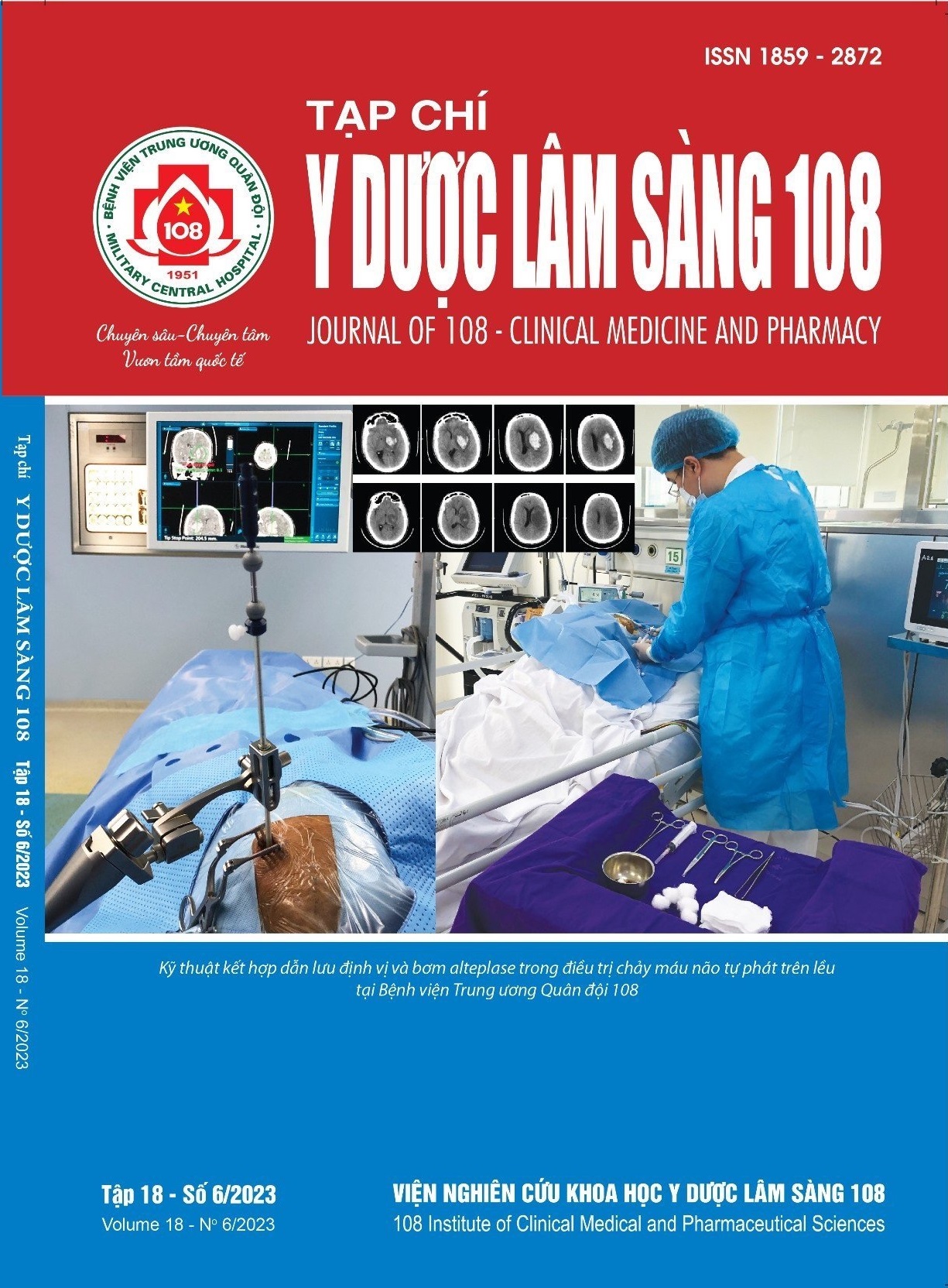To evaluate the effect and safety of precut sphincterotomy for difficult biliary cannulation in endoscopic retrograde cholangiopancreatography
Main Article Content
Keywords
Abstract
Objective: To evaluate the characteristics of the effects, and complications of precut sphincterotomy for difficult biliary cannulation in endoscopic retrograde cholangiopancreatography. Subject and method: A descriptive study conducted with 110 patients who had performed precut sphincterotomy for difficult biliary cannulation in endoscopic retrograde cholangiopancreatography at 108 Military Central from January 2021 to May 2023. Result: A total of 110 patients (average age 66.9 ± 15.6, female 32.73%) with difficult biliary cannulation required precut sphincterotomy had previous operation with Billroth II gastrectomy and hepatopancreatic biliary surgery had 5.4% and 22.7%, respectively. The rate of diagnoses with the stones bile duct, malignant jaundice, and others had 47.3%; 36.4%, and 16.4%, respectively. Precut sphincterotomy with needle-knife fistulotomy, needle-knife precut sphincterotomy, and trans pancreatic sphincterotomy recorded 86.4%, 6,4%, and 7.3%. The precutting procedure was successful with 89.1%. The complication rate was 19.19% (21 of 110) (bleeding 4.5%, pancreatitis 9.1%, and cholangitis 5.5%, perforation 0%). Conclusion: Precut sphincterotomy for difficult biliary cannulation in endoscopic retrograde cholangiopancreatography resulted in a high success and safety.
Article Details
References
2. Akaraviputh T, Lohsiriwat V, Swangsri J et al (2008) The learning curve for safety and success of precut sphincterotomy for therapeutic ERCP: A single endoscopist's experience. Endoscopy 40(6): 513-516.
3. Berry R, Han JY, Tabibian JH (2019) Difficult biliary cannulation: Historical perspective, practical updates, and guide for the endoscopist. World J Gastrointest Endosc 11(1): 5-21.
4. Cotton PB, Lehman G, Vennes J et al (1991) Endoscopic sphincterotomy complications and their management: an attempt at consensus. Gastrointest Endosc 37(3): 383-393.
5. Freeman ML (2003) Understanding risk factors and avoiding complications with endoscopic retrograde cholangiopancreatography. Curr Gastroenterol Rep 5(2): 145-153.
6. Freeman ML, Guda NM (2005) ERCP cannulation: a review of reported techniques. Gastrointest Endosc. 61(1): 112-125.
7. Katsinelos P, Gkagkalis S, Chatzimavroudis G et al (2012) Comparison of three types of precut technique to achieve common bile duct cannulation: a retrospective analysis of 274 cases. Dig Dis Sci. 57(12): 3286-3292.
8. Liao WC, Angsuwatcharakon P, Isayama H et al (2017) International consensus recommendations for difficult biliary access. Gastrointest Endosc. 85(2): 295-304.
9. Miura F, Okamoto K, Takada T et al (2018) Tokyo Guidelines 2018: initial management of acute biliary infection and flowchart for acute cholangitis. J Hepatobiliary Pancreat Sci 25(1): 31-40.
10. Thaker AM, Mosko JD, Berzin TM (2015) Post-endoscopic retrograde cholangiopancreatography pancreatitis. Gastroenterol Rep (Oxf) 3(1): 32-40.
 ISSN: 1859 - 2872
ISSN: 1859 - 2872
